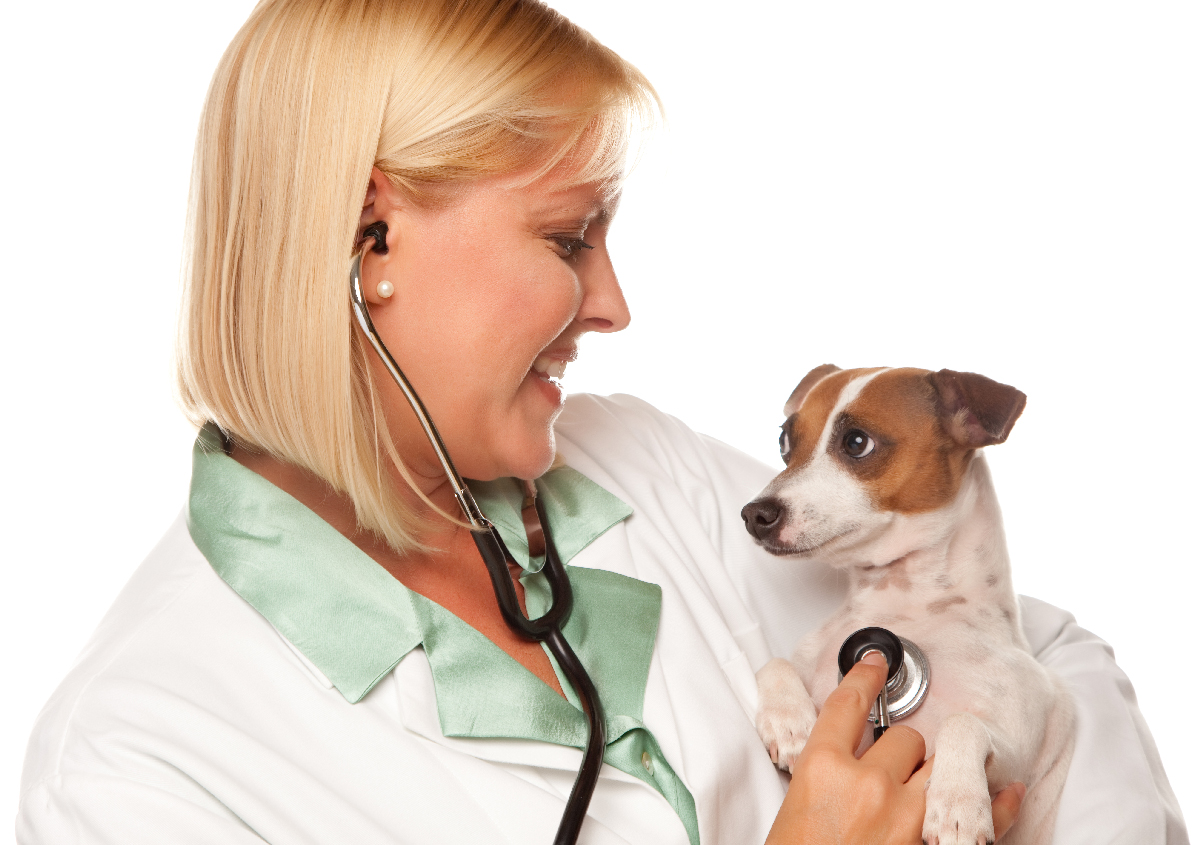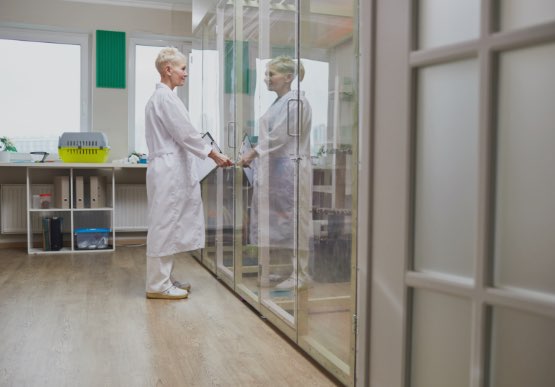Step-by-Step Preparation Tips Before Scheduling CT Scans For Animals}
Wiki Article
The Role of Ultrasound and CT Check in Modern Vet Practices: Insights From Experienced Professionals
In modern vet methods, ultrasound and CT scans substantially improve analysis abilities. These imaging techniques offer critical insights right into animal wellness, guiding therapy choices. Experienced professionals acknowledge the one-of-a-kind advantages of each method. Ultrasound uses real-time analyses, while CT scans supply detailed anatomical details. Understanding their applications and functions elevates essential inquiries regarding their influence on client results and the future of veterinary diagnostics. What insights can be gotten from their integrated use?Understanding Ultrasound in Vet Medication
Ultrasound is a crucial diagnostic device in vet medicine, using a non-invasive approach to picture inner frameworks. This imaging technique employs high-frequency audio waves to create real-time photos of organs and tissues, enabling vets to analyze conditions without medical intervention. Typical applications include reviewing the heart, liver, kidneys, and reproductive body organs, in addition to monitoring pregnancies.The procedure is relatively fast and can be performed in different settings, making it an easily accessible option for veterinarians. Unlike radiography, ultrasound supplies in-depth info regarding soft tissues and blood flow, which is important for precise diagnoses.Veterinary professionals depend on ultrasound to spot problems such as tumors, cysts, and liquid accumulation. Its ability to direct biopsies and various other treatments additionally improves its energy in medical practice. By offering a risk-free and reliable means to take a look at interior anatomy, ultrasound has become a keystone of contemporary veterinary diagnostics.
The Benefits of CT Checks for Pet Diagnostics
CT scans offer considerable benefits in vet diagnostics by providing improved precision in recognizing inner conditions (Ultrasound For Dogs). As a non-invasive imaging method, they guarantee the safety and security and comfort of pets throughout examinations. On top of that, CT checks facilitate an extensive analysis of internal frameworks, allowing for more efficient therapy preparationImproved Diagnostic Precision
Advancements in imaging modern technology have substantially improved analysis precision in vet medicine, especially through the usage of CT scans. These scans supply thorough cross-sectional photos of an animal's inner frameworks, allowing veterinarians to identify irregularities with accuracy. The high resolution and three-dimensional capabilities of CT imaging facilitate the detection of problems such as growths, cracks, and inner blood loss that may be missed out on with conventional imaging techniques. Additionally, CT scans can help in pre-surgical preparation by providing a detailed view of physiological relationships. This level of detail not only boosts the precision of diagnoses however likewise aids in customizing effective therapy plans. Consequently, the integration of CT modern technology right into vet methods is changing the landscape of animal healthcare, improving results for people.Non-Invasive Imaging Technique
The intro of non-invasive imaging strategies has actually reinvented animal diagnostics, with CT scans becoming a prominent device in vet practices. These scans give high-resolution, cross-sectional pictures of an animal's inner frameworks, allowing vets to assess complicated problems without the need for invasive procedures. The benefits of CT scans include their capacity to find growths, cracks, and inner bleeding with exceptional precision. Additionally, they help with the assessment of soft cells and organs, improving analysis capabilities. The rate of CT scanning makes it possible for fast decision-making, which is essential in emergency circumstances. By reducing stress and pain for the animal, CT scans contribute to an extra gentle technique to diagnostics, eventually boosting therapy results and progressing veterinary care.Comprehensive Internal Evaluation
A thorough interior assessment is important for precise diagnosis and efficient treatment in vet medicine. CT checks offer significant advantages hereof, supplying detailed cross-sectional photos of an animal's internal frameworks. This advanced imaging modality improves visualization of complicated physiological areas, enabling veterinarians to determine irregularities such as growths, cracks, and inner bleeding with greater precision. On top of that, CT checks help with the assessment of problems that may be challenging to detect via standard approaches. The rate and accuracy of CT imaging also add to timely interventions, improving individual outcomes. As veterinary techniques significantly include CT technology, the benefits of extensive interior analyses become evident, reinforcing the value of this tool in modern-day vet diagnostics.Comparing Ultrasound and CT Imaging Techniques
While both ultrasound and CT imaging offer vital functions in vet diagnostics, each method offers unique benefits and restrictions that can influence medical decision-making. Ultrasound is specifically valued for its real-time imaging abilities, enabling veterinarians to observe vibrant physiological procedures. This strategy is non-invasive, mobile, and does not involve ionizing radiation, making it a safer alternative for both pets and clinicians. Ultrasound might have limitations in picturing specific anatomical frameworks or deep tissues.Conversely, CT imaging supplies comprehensive cross-sectional sights of the body, allowing for accurate localization of problems. It stands out in assessing complicated organs and frameworks, especially in the thorax and abdomen. CT scans call for sedation or anesthesia in lots of cases and include direct exposure to ionizing radiation. Ultimately, the selection in between ultrasound and CT depends on the particular professional situation, the location of interest, and the seriousness of the analysis requirements.Instance Studies: Successful Diagnoses Through Imaging
Study show the substantial improvements in diagnostic accuracy achieved through sophisticated imaging innovations like ultrasound and CT scans in veterinary methods. These improvements not only boost the discovery of numerous conditions however likewise help with reliable and timely treatment strategies. Analyzing specific situations can highlight the transformative impact of these imaging techniques on veterinary medicine.Diagnostic Precision Improvements

Imaging Technology Advancements
As veterinary imaging modern technology remains to develop, its influence on analysis abilities becomes significantly apparent. Recent situation studies highlight the effective application of advanced ultrasound and CT check techniques in identifying complex problems. A vet center used high-resolution CT scans to detect an unusual type of lung cancer cells in a pet, which traditional imaging had actually missed. In a similar way, an ultrasound assessment exposed an abdominal mass in a feline, motivating prompt medical intervention and a favorable result. These improvements not only improve diagnostic precision but additionally enable veterinarians to create targeted therapy plans. By leveraging innovative imaging innovations, veterinary professionals are considerably Ultrasound For Dogs improving individual treatment, bring about extra reliable monitoring of different health problems in animals.
The Duty of Imaging in Emergency Veterinary Care
Imaging plays a necessary role in emergency situation veterinary treatment, giving veterinarians with crucial information required to make rapid, enlightened choices. In urgent situations, strategies like ultrasound and CT scans allow practitioners to promptly analyze a pet dog's interior structures, identifying critical problems such as interior bleeding, cracks, or body organ problems. These imaging methods enable real-time analyses, facilitating prompt interventions that can be life-saving. As an example, ultrasound is vital for assessing soft tissue injuries and problems like fluid build-up, while CT scans offer thorough pictures of intricate physiological structures, vital for diagnosing injury instances. The rate and precision of these imaging techniques improve the veterinarian's capability to develop reliable therapy plans, ensuring the most effective feasible end results for their individuals. Consequently, the combination of sophisticated imaging innovations right into emergency situation vet methods is not just advantageous however progressively necessary, as it boosts diagnostic abilities and boosts total animal treatment during defining moments.Training and Experience in Veterinary Imaging
Although sophisticated imaging strategies such as ultrasound and CT scans are essential for efficient vet treatment, the effective application of these innovations heavily relies on the training and know-how of vet experts. Skilled usage of imaging tools needs thorough expertise of anatomy, pathology, and the concepts underlying each modality. Vet experts should undertake specific training to properly interpret imaging outcomes, which is crucial for identifying problems and intending treatment.Certifications and continuing education and learning in vet imaging enhance the abilities of professionals, allowing them to stay updated with technical improvements. Collaboration in between radiologists and veterinarians typically leads to boosted analysis precision, as specialists can provide insights right into complicated instances. On top of that, sensible experience in dealing with imaging tools promotes self-confidence in its application. Eventually, the quality of vet imaging services is directly correlated to the degree of training and proficiency possessed by the experts making use of these important analysis devices.Future Patterns in Diagnostic Imaging for Animals
With the fast improvements in modern technology, veterinary analysis imaging is positioned for significant advancement in the coming years. Arising trends suggest a change in the direction of more available and mobile imaging techniques, such as handheld ultrasound devices, which could enhance area diagnostics. Additionally, the combination of expert system is anticipated to transform picture analysis, permitting quicker and more precise analyses of results.Moreover, developments in 3D imaging methods and calculated tomography will provide vets with more detailed sights of pet anatomy, resulting in improved treatment plans. Online fact innovation might additionally play a role in medical planning and education and learning, offering vets an unique perspective on complex cases.As telemedicine proceeds to grow, remote examinations assisted in by diagnostic imaging will certainly become extra typical, allowing experts to aid family doctors in real-time. On the whole, these patterns are readied to improve the efficiency and performance of veterinary care, eventually enhancing pet outcomes.Frequently Asked Inquiries
Just How Much Do Ultrasound and CT Checks Cost in Veterinary Clinics?
The costs of ultrasound and CT scans in veterinary facilities normally vary from $300 to $1,500, relying on factors such as place, center kind, and details procedures required for the animal's medical diagnosis and therapy.
Exist Any Dangers Related To Ultrasound and CT Checks for Animals?
Ultrasound and CT scans typically position very little dangers to family pets. Prospective issues consist of sedation responses and direct exposure to anesthetics. Vets carefully evaluate each case to reduce any risks associated with these diagnostic proceduresThe Length Of Time Do Ultrasound and CT Procedures Typically Take?
Ultrasound treatments typically take about half an hour to an hour, relying on the complexity. CT scans, being even more thorough, usually require half an hour to 90 mins, including prep work and healing time for the pet dog.Can All Veterinarians Perform Ultrasounds and CT Scans?
Not all veterinarians can perform ultrasounds and CT scans. Specialized training and accreditation are often called for to assure competency in these sophisticated imaging methods, which may restrict their availability to veterinarians with added qualifications and sources.What Sorts Of Pets Benefit Most From These Imaging Techniques?
Certain animal species, specifically canines and felines, advantage substantially from ultrasound and CT scans. These imaging strategies boost diagnostic accuracy for conditions like lumps, internal injuries, and body organ problems, bring about enhanced therapy results and person care. The high resolution and three-dimensional capabilities of CT imaging assist in the detection of problems such as lumps, fractures, and interior bleeding that could be missed with conventional imaging approaches. Situation research studies show the considerable renovations in diagnostic precision accomplished via sophisticated imaging modern technologies like ultrasound and CT scans in veterinary methods. Improving analysis precision in veterinary practices has actually been significantly aided by developments in imaging modern technologies such as ultrasound and CT scans. Sophisticated imaging methods such as ultrasound and CT scans are vital for efficient veterinary treatment, the effective execution of these technologies greatly depends on the training and competence of vet experts. Veterinary specialists should undertake specialized training to properly interpret imaging outcomes, which is essential for diagnosing conditions and intending treatment.Certifications and continuing education in veterinary imaging enhance the skills of practitioners, enabling them to remain updated with technical innovations.Report this wiki page